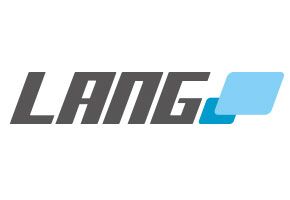What return to the office means for the corporate AV market

According to Craig Durr, industry analyst and founder of the Collab Collective, the conversation around RTO is far from over – and its impact on the AV market is both nuanced and ongoing.
“Return to office is an ongoing conversation. And that’s probably more of where we are now – the conversation, rather than the act of it,” he explains, emphasising that RTO is not a one-time event but a shifting reality for many organisations. While headline-grabbing mandates from Fortune 100 companies have made waves, Durr notes that compliance is lagging: “Firms are increasing the time they're asking employees to come into the office by about 12% on average across a five-day week*… but compliance to that has only risen by about 1 or 2%.”
This gap between policy and practice means that, despite stricter mandates, many employees are still working flexibly.
The AV opportunity: enabling hybrid work
For the AV industry, this ongoing flex presents both challenges and opportunities. “Whilst businesses implement stricter RTO policies to get workers back to the office, there's still a lot of upsides for AV because meeting room problems still exist,” says Durr. Research by Microsoft suggest that only about 8% of conference rooms worldwide are video enabled, highlighting a significant growth area for AV providers.
Even as employees return to physical offices, the likelihood of being co-located with colleagues has decreased. “Here in 2025, co-workers may still be back in the office, but there's a good chance they’re not in the same building or even the same country, so we still have this flex, this remote use case situation,” he explains. “Workplace AV solutions and UC platforms are even more essential than ever.”
This reality underscores the need for robust AVUC solutions that support both in-person and remote collaboration.
Challenges and trends
One of the main hurdles that organisations face is the integration of technologies across mixed ecosystems. “Am I on a Teams call, am I on a Zoom call… ? We've got to have these tech environments that are enabled for multiple use cases,” Durr notes. The prevalence of bring-your-own-device (BYOD) policies adds another layer of complexity. “There's a lot more opportunity to enable meeting rooms for a better, more secure wireless content sharing and BYOD experience, too." Barco is one of the companies doing a great job here, he adds.
To entice employees back to the office and boost productivity, companies are investing in “meeting equity” – technologies that ensure all participants, whether in-room or remote, have an equal experience. “Multiple cameras installed in a room to show multiple participants at once, better audio pickup and speakers… you're not only enabling the people in the room, but you're enabling those people who aren't in the room to have a counterpart experience,” he explains.
He also highlights a shift from activity-based to cognitive-based space planning: “The question that we're challenging the equipment with is, can the equipment adapt to what the room goal is at that point in time?” This flexibility, he argues, is key to making office spaces more attractive and functional for a variety of uses.
He continues, “We’re getting to a point of being more data-driven in terms of how we’re planning spaces. By utilising the data provided by integrated sensors, and building management systems or Integrated Workspace Management Systems, organisations can optimise meeting room real estate.”
The bottom line
Despite RTO mandates, the need for hybrid and flexible work solutions remains strong. “Even these tightening RTO mandates are not reducing or eliminating the need for hybrid work, in fact it drives the need for more efficient, user-friendly meeting spaces and on-going service contracts with AVUC providers,” Durr concludes.
For the corporate AV market, the message is clear: adaptability, interoperability, and user-centric design will define the next wave of innovation.
Stay informed!
ISE is the world-renowned annual tech show for the AV and systems integration industry, taking place in Barcelona, 3-6 February 2026. It will spotlight the latest unified communications solutions from leading manufacturers, including video communications, integrated flat-panel displays and content-sharing tools.
To discover the latest solutions and innovations from the unified communications suppliers exhibiting at ISE, as well as the hottest industry trends, sign up now for updates.
Don't miss out – join our community today and stay at the forefront of unified communications technology.

)
)
)
)
)
)
)
)
)

)
)
)
)
)
)
)
)
)
)
)
.png/fit-in/500x500/filters:no_upscale())
)
)
)
)
)
)
)
)
)
)
)
)
)
)
)
)
)
)
)

)
)
)
)
)
)
)
)
)
)
)
)
)
)
![rAVe [PUBS]](https://cdn.asp.events/CLIENT_Integrat_169E7B04_E6F3_39F6_8BE4DB27C54F731E/sites/ise-2026/media/libraries/partners/rAVe-PUBS-Google-Logo.png/fit-in/500x500/filters:no_upscale())

)
)
)
)
)
)
)
)
)
)
)
)
)